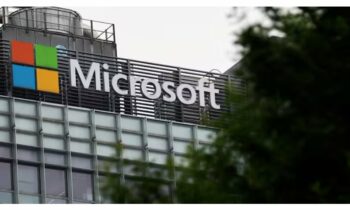You might not think you need machine learning yet in ecommerce and retail. These companies are ahead of your business and already doing it. Let’s talk about machine learning in retail.
Walmart – Facial Recognition & Inventory Automation
Walmart is using machine learning for multiple new tools, used for both in store shoppers and online ecommerce. One of the most interesting ways they are using machine learning in retail stores is customer satisfaction through facial recognition. The software can detect upset or angry customers in real time and allow employees to take action to help customers throughout the store.
In terms of machine learning for automation, Walmart has rolled out Pick-up Towers in stores, allowing customers to scan an online receipt and have the products automatically arrive in the kiosk. Customers have said this makes an in store shopping experience quicker and more enjoyable.
Amazon – Machine Learning In E-commerce
Given Amazon’s focus on ecommerce and online retail, it’s no surprise that they are on the forefront of modern machine learning in e-commerce. Using their deep data analytics of everything sold on their website, they can use forecasting and predict models to forecast demand months out for certain products, allowing them to control any shortages and reduce downtime.
Amazon uses this same big data system to allow for more targeted product recommendations and advertisements to potential buyers. Meaning this lets amazon take advantage of models known as “buyer intent”, allowing amazon to learn about what the ideal customer looks like for certain products and target lookalikes at a high conversion rate. Many online retailers and product distributors are using these buyer intent models now, along with social media influencers and advertisers.
American Eagle – Machine Learning In Retail
American Eagle is working with computer vision and image recognition companies to build software that allows shoppers to use their camera to help them shop and find clothing in stores. The machine learning software also uses a recommender system to help shoppers put together wardrobes.
What Do Retailers Think?
In 2018, a study known as Benefits of AI for Retail said cost savings has the potential to be the most impactful benefit of machine learning and AI for retailers. Most of these ideas of cost saving boil down to one general idea, optimization. Let’s talk about one way you can implement machine learning in retail to optimize out costs.
Optimized Route Planning
To understand route planning in retail, let’s look at work done for Anheuser-Busch. Using computer vision and IoT sensors, the large brewing company is able to track all parts of a delivery, and update routes in real time based on weather, road conditions, blockage and more. This increase in data can be fed into machine learning models to optimize future routes and help reach on time goals more often. The path optimization algorithm, along with image processing and much more they implemented allowed them to reach an On Time percentage of 98.4%, much higher than their low of 76.4% previously. Each time an optimized path is used for a delivery, that data is stored and used in models for future runs. An unexpected benefit of these optimized routes is a reduction in what’s known as the “last mile problem”. This refers to problems during the end of deliveries, usually miscommunications on timing and locations. The increase in on time deliveries improved communications and reduced issues at the end of deliveries.
Machine Learning Price Optimization – Retail
One of the main ways machine learning price optimization is being used today to understand the impact of sales and promotions and how to price these sales to reach an optimization goal. A retailer can take all the variables including % of discount, shelf placement, competitors products and much more, and feed them into a model like a decision tree or neural network, and decide the best course of action for a sale. These straightforward real world variables make it easy to tune them for outside costs, like limits to discount % or amount of inventory. The long term benefit of building these models is it allows you to build simulations that make it easier to predict how your model will work, based on past sales data or number of customers.
Interested in learning how you can implement machine learning in e-commerce or retail? Check Out Scalr.ai!
A little bit about Us:
We are a machine learning and ai consulting firm focused completely on building business tools to increase profitability for clients. We specialize in natural language and computer vision systems that allow us to build software solutions for all kinds of industries, anything from online retailers to medical apps to building supply companies.
Want to learn more about how machine learning is used in retail business? Click the link to read about how we helped automate backend systems for an online retailer to remove a huge chuck of their workload!



